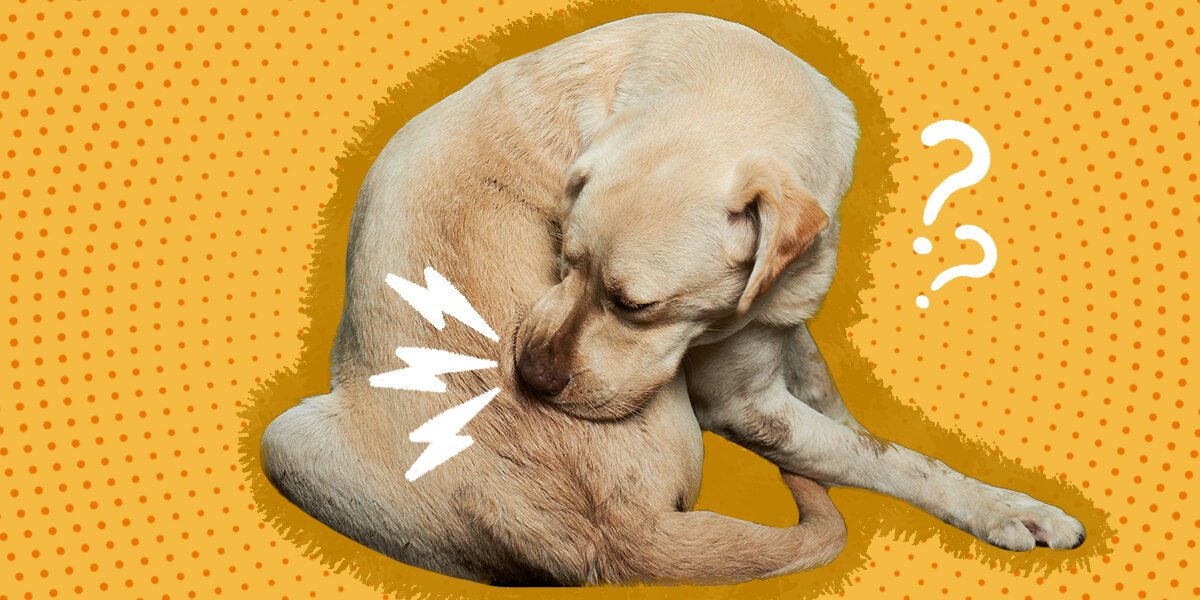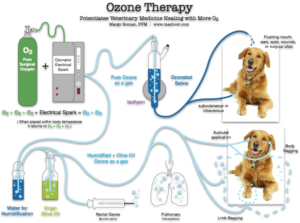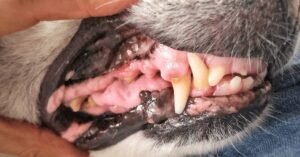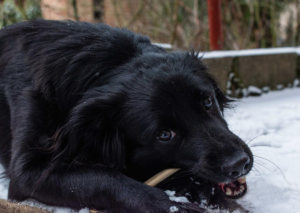Is your dog constantly chewing his tail? This behavior can be puzzling for many pet owners. So let’s jump in deep: Why Does My Dog Keep Chewing His Tail?
Tail chewing may seem harmless, but it can indicate underlying issues. Dogs may chew their tails for various reasons. Some dogs do it out of boredom, while others may be trying to relieve stress. Allergies, skin irritations, or even parasites can also cause this behavior.
Understanding why your dog chews his tail is important for his health and happiness. Observing your dog’s habits and behaviors can offer clues. Paying attention to when and how often he chews is key. This information can help you determine if a visit to the vet is needed. Let’s explore the reasons behind this common canine habit.
Table of Contents
Introduction To Canine Tail-chewing Behavior
Many dog owners wonder why their dogs chew their tails. This behavior can seem strange or worrying. Understanding why dogs engage in this behavior is important. It can help owners take the right steps to address it.
Common Misconceptions About Tail-chewing
Several myths surround tail-chewing in dogs. These misunderstandings can lead to confusion.
- Dogs chew their tails out of boredom. While boredom can be a factor, it is not always the main reason.
- Tail-chewing is always a sign of anxiety. Stress can cause tail-chewing, but it isn’t the only cause.
- Only certain breeds chew their tails. Any breed can engage in this behavior.
- Tail-chewing is harmless. It can lead to injuries or infections if not addressed.
Importance Of Addressing The Behavior
Addressing tail-chewing is crucial for your dog’s health.
- Prevents injury: Continuous chewing can damage the tail.
- Avoids infections: Open wounds can lead to serious health issues.
- Improves quality of life: Reducing discomfort enhances your dog’s happiness.
- Strengthens bond: Working together on this behavior builds trust.
Understanding the reasons behind tail-chewing helps owners respond effectively. Consult a vet for guidance. They can help determine the cause and suggest solutions.
The Psychology Behind Tail-chewing
Understanding why your dog chews his tail involves looking at his mind. Dogs often express feelings through behaviors. Tail-chewing might signal something deeper. Stress, boredom, or anxiety can drive this action.
By examining your dog’s behavior, you can better address the issue. Let’s explore the common reasons behind tail-chewing.
Canine Stress And Anxiety Triggers
Dogs experience stress and anxiety just like humans. Several factors can trigger these feelings:
- Changes in routine
- Loud noises, like thunderstorms
- Separation from their owner
- New pets or family members
- Moving to a new home
These triggers can lead to compulsive behaviors. Tail-chewing is one way dogs cope with stress.
Behavioral Patterns And Tail-chewing
Dogs often develop behavioral patterns based on their experiences. Tail-chewing might start as a simple action. Over time, it can become a habit. This behavior may serve different purposes:
- Relief from boredom: Dogs need mental stimulation.
- Attention-seeking: Chewing can get your attention.
- Self-soothing: It provides comfort during stressful times.
Identifying these patterns helps in finding solutions. Observe your dog’s triggers and behaviors closely.
Medical Causes Of Tail-chewing
Understanding why your dog chews its tail is essential. Medical issues often cause this behavior. Let’s explore some common medical reasons behind tail-chewing.
Skin Conditions Leading To Irritation
Skin problems can make your dog very uncomfortable. Various conditions can lead to irritation, including:
- Hot Spots: These are painful, inflamed areas on the skin.
- Fleas: Flea bites can cause intense itching.
- Dermatitis: This condition can cause redness and swelling.
These skin issues often lead to constant licking or chewing. Regular grooming can help prevent many of these conditions.
Allergies And Their Role In Discomfort
Allergies can be a significant factor in tail-chewing. Dogs can be allergic to:
- Food ingredients
- Pollen
- Dust mites
Signs of allergies may include:
- Itching
- Red skin
- Ear infections
Allergic reactions can lead to tail-chewing as dogs try to relieve their discomfort. Identifying and treating allergies is crucial for your dog’s well-being.
Parasitic Infestations And Tail-chewing
Dogs often chew their tails due to various reasons. One common cause is parasitic infestations. Fleas, ticks, and mites can irritate your dog’s skin. This irritation leads to itching and discomfort, prompting tail-chewing behavior. Understanding these parasites helps you take action to stop the problem.
Fleas, Ticks, And Mites As Culprits
Fleas, ticks, and mites are small pests that can cause big problems. Each one can lead to tail-chewing for different reasons:
- Fleas: These tiny insects bite and feed on your dog’s blood. Their bites cause itching and irritation.
- Ticks: Ticks attach to your dog’s skin and can spread disease. Their presence can make your dog feel uncomfortable.
- Mites: Mites cause conditions like mange. This leads to intense itching and hair loss.
Each of these parasites can trigger a strong urge to chew the tail. This behavior is a response to the discomfort they cause.
Prevention And Treatment Of Infestations
Preventing and treating parasitic infestations is crucial. Here are some effective methods:
| Prevention Method | Description |
|---|---|
| Regular grooming | Brush your dog’s coat often. This helps remove pests. |
| Use preventive medications | Apply topical treatments or oral medications monthly. |
| Keep the environment clean | Vacuum your home regularly. Wash your dog’s bedding frequently. |
For treatment, consult your veterinarian. They can recommend specific products. Follow their guidance to ensure your dog’s comfort.
Environmental Factors Influencing The Behavior
Dogs may chew their tails for many reasons. One major reason is their environment. Factors like living conditions, exercise, and playtime can all impact this behavior. Understanding these factors helps in addressing the issue.
Impact Of Living Conditions On Tail-chewing
Living conditions play a big role in your dog’s behavior. A stressful or unclean environment can lead to tail chewing. Here are some key points:
- Stressful surroundings: Loud noises or chaotic homes can trigger anxiety.
- Dirty space: A lack of cleanliness may cause skin irritations.
- Loneliness: Dogs left alone for long periods may feel bored or anxious.
These factors can cause dogs to chew their tails as a way to cope. A calm and clean environment can help reduce this behavior.
The Role Of Exercise And Playtime
Regular exercise is essential for dogs. It helps keep them healthy and happy. A lack of exercise can lead to boredom. Bored dogs often engage in destructive behaviors, like tail chewing. Consider these aspects:
- Daily walks: Aim for at least 30 minutes each day.
- Interactive toys: Use toys that stimulate their mind.
- Playtime: Engage in games like fetch or tug-of-war.
Providing enough physical and mental activity can reduce tail chewing. Happy, tired dogs are less likely to engage in this behavior.
Behavioral Interventions And Training
Understanding why your dog chews his tail is important. Behavioral interventions can help. Training your dog can reduce this habit. Here are some effective methods.
Positive Reinforcement Techniques
Positive reinforcement is a powerful tool. It encourages good behavior. Here are some steps to follow:
- Reward good behavior: Give treats when your dog stops chewing.
- Use praise: Verbally praise your dog for not chewing.
- Provide distractions: Offer toys to keep him busy.
- Set a routine: Regular playtime can reduce boredom.
Keep the training sessions short. Aim for about 5 to 10 minutes each time. Repeat these actions regularly. This helps reinforce positive habits.
Professional Training And Behavior Modification
Sometimes, professional help is needed. Trainers specialize in dog behavior. They can identify the root cause of tail chewing. Here are some options:
| Service | Description |
|---|---|
| One-on-one sessions | Personalized training to address specific issues. |
| Group classes | Socialize your dog while learning basic commands. |
| Behavior assessment | Identify triggers for tail chewing. |
Professional training can help modify behavior. Trainers use techniques that work best for your dog. They create a tailored plan. This can lead to lasting change.
When To Consult A Veterinarian
Watching your dog chew its tail can be concerning. Sometimes, this behavior is normal. Other times, it may indicate a problem. Knowing when to seek help is crucial for your pet’s health.
Signs That Indicate A Vet Visit Is Necessary
Look for these signs if your dog chews its tail:
- Excessive chewing: If your dog chews for long periods.
- Skin irritation: Redness, swelling, or sores on the tail.
- Hair loss: Noticeable bald spots on the tail area.
- Changes in behavior: Increased anxiety or aggression.
- Infection signs: Pus, foul odor, or bleeding.
What To Expect During The Examination
Your veterinarian will perform a thorough examination. Here’s what typically happens:
- Physical exam: The vet checks the tail and surrounding areas.
- Medical history: Discuss any changes in behavior or health.
- Skin tests: The vet may test for allergies or infections.
- Treatments: They will suggest appropriate treatments or medications.
Be ready to answer questions about your dog’s habits. This helps the vet make a proper diagnosis.
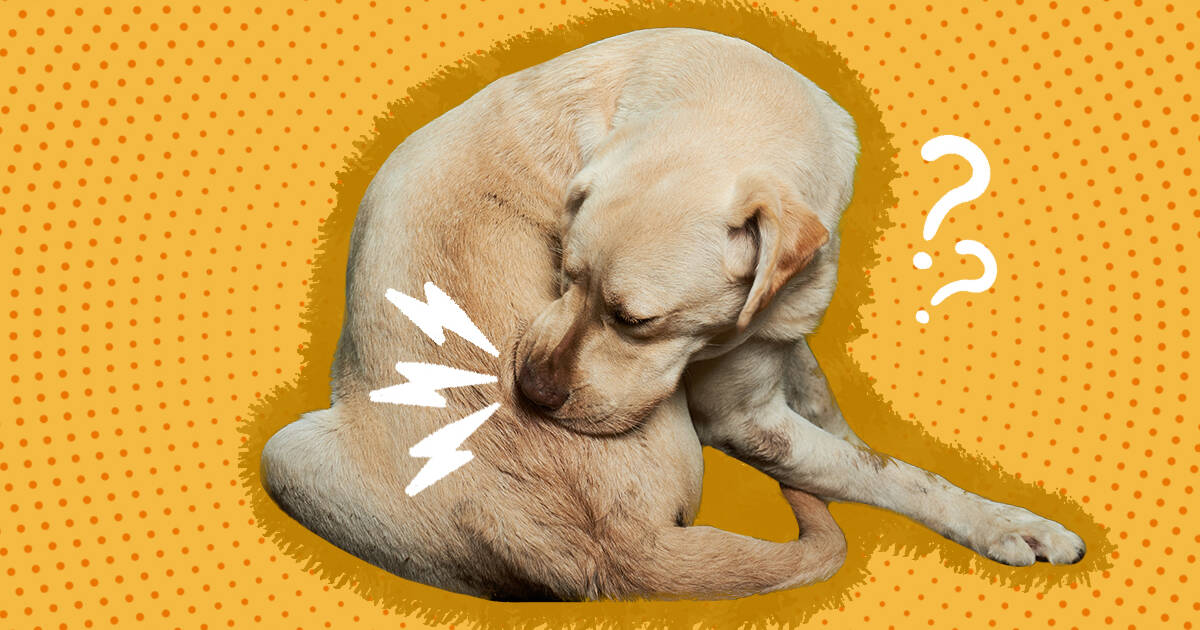
Credit: www.thedodo.com
Preventative Measures For Tail-chewing
Understanding why dogs chew their tails is important. Prevention can help reduce this behavior. Here are some effective measures to consider.
Dietary Adjustments For Better Health
Diet plays a big role in your dog’s overall health. A poor diet can lead to skin issues. These issues may cause tail-chewing. Here are some dietary tips:
- High-quality food: Choose food with real meat and no fillers.
- Allergies: Identify and avoid any food allergens.
- Supplements: Add omega-3 fatty acids for skin health.
- Hydration: Ensure your dog drinks enough water daily.
Consult your vet for specific dietary needs. They can suggest the best food for your dog.
Regular Grooming And Care Routines
Grooming helps keep your dog’s coat healthy. Regular grooming can prevent skin irritations.
Here are some grooming tips:
- Brush your dog’s fur at least once a week.
- Check for fleas and ticks regularly.
- Give baths as needed, using gentle shampoo.
- Trim nails to prevent discomfort.
Establish a grooming schedule. This helps your dog feel comfortable and clean.
These preventative measures can reduce tail-chewing. Keep your dog happy and healthy with proper care.
Conclusion: Fostering A Happy, Healthy Dog
Understanding why your dog chews his tail is key. It helps you care for him better. A happy dog leads to a happy home. Focus on his needs, and you will see the difference.
Summarizing Key Points
- Dogs chew their tails for various reasons.
- Common causes include boredom, stress, or allergies.
- Regular vet check-ups are essential for health.
- Providing toys can reduce boredom.
- Training helps manage stress and anxiety.
Encouragement For Ongoing Care And Attention
Your dog needs your love and attention daily. Spend time playing with him. Regular exercise keeps him healthy and happy.
Keep an eye on his behavior. Look for signs of discomfort or stress. Early intervention is vital for health issues.
- Schedule regular vet visits.
- Provide a balanced diet.
- Engage in daily physical activity.
- Offer mental stimulation through puzzles.
- Show love and affection consistently.
With proper care, your dog will thrive. A happy dog brings joy to your life.

Credit: www.wikihow.pet
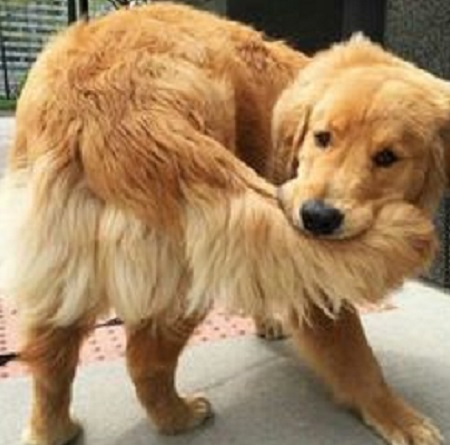
Credit: www.grrmf.org
Frequently Asked Questions
Why Does My Dog Chew His Tail Constantly?
Dogs may chew their tails due to boredom, anxiety, or skin irritations. Tail chewing can also signal allergies or parasites. Regular exercise and mental stimulation can help reduce this behavior. If the problem persists, consult your veterinarian for guidance and potential treatment options.
Is Tail Chewing A Sign Of Anxiety In Dogs?
Yes, tail chewing can indicate anxiety or stress in dogs. This behavior often stems from feelings of insecurity or fear. Dogs may also chew their tails when left alone for extended periods. Providing a safe environment and training can help alleviate their anxiety.
How Can I Stop My Dog From Chewing His Tail?
To stop tail chewing, ensure your dog gets enough exercise and mental stimulation. Engage them with toys and training activities. If the behavior continues, consider using deterrents or consult a veterinarian for advice. Identifying the underlying cause is crucial for effective solutions.
Should I Be Worried About My Dog’s Tail Chewing?
While occasional tail chewing isn’t usually a concern, persistent chewing can indicate underlying issues. This behavior might lead to injuries, infections, or skin problems. If your dog frequently chews his tail, consult a veterinarian for a thorough evaluation and appropriate treatment.
Conclusion
Chewing their tail can confuse dog owners. It often shows boredom or stress. Understanding your dog’s behavior is key. Observe for signs of anxiety or irritation. Providing toys and more exercise can help. If the chewing continues, consult a vet.
They can check for any health issues. A happy dog is a healthy dog. Keep your furry friend engaged and comfortable. This will reduce tail chewing and improve their well-being. Remember, your dog’s happiness matters most.
